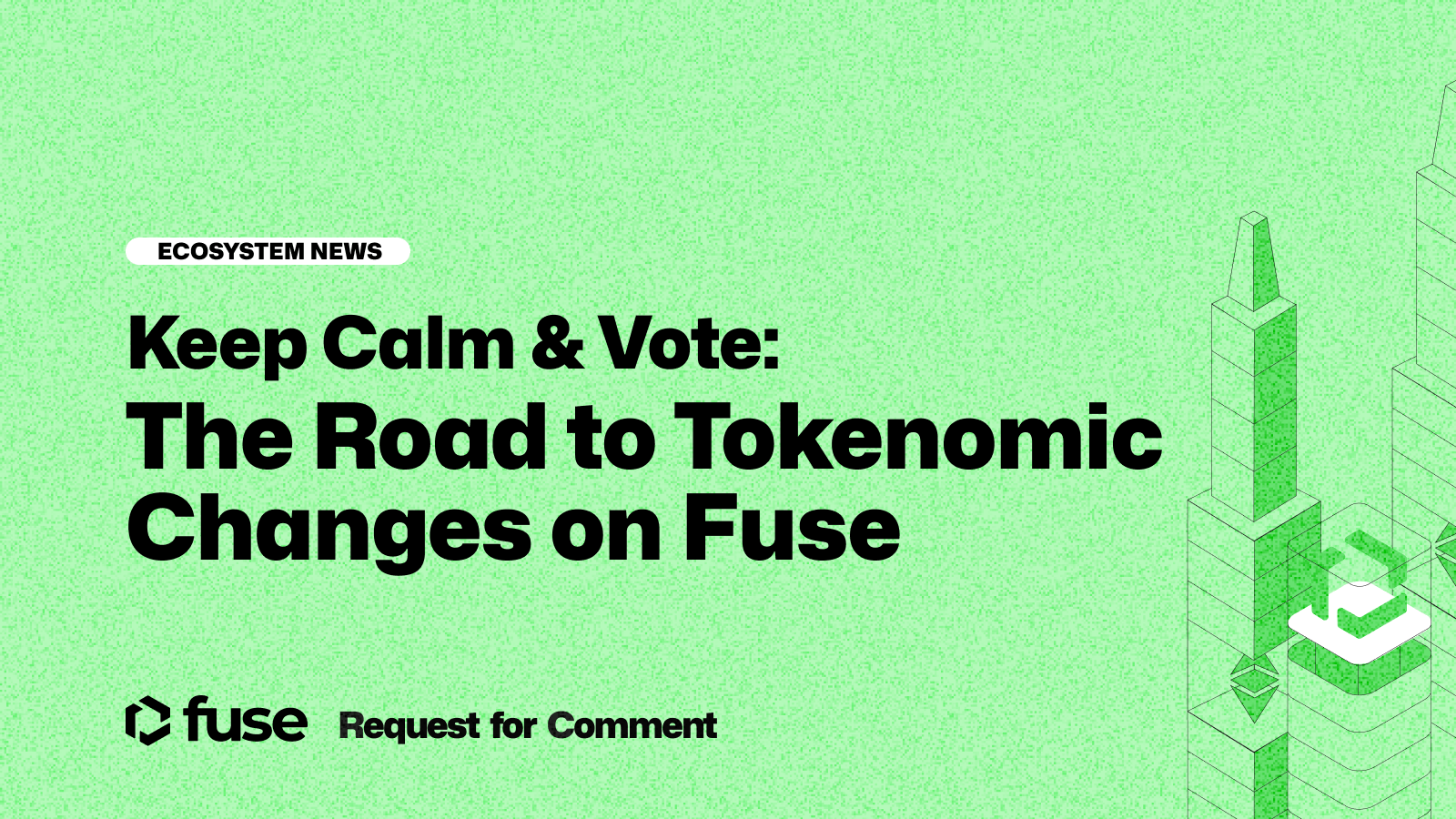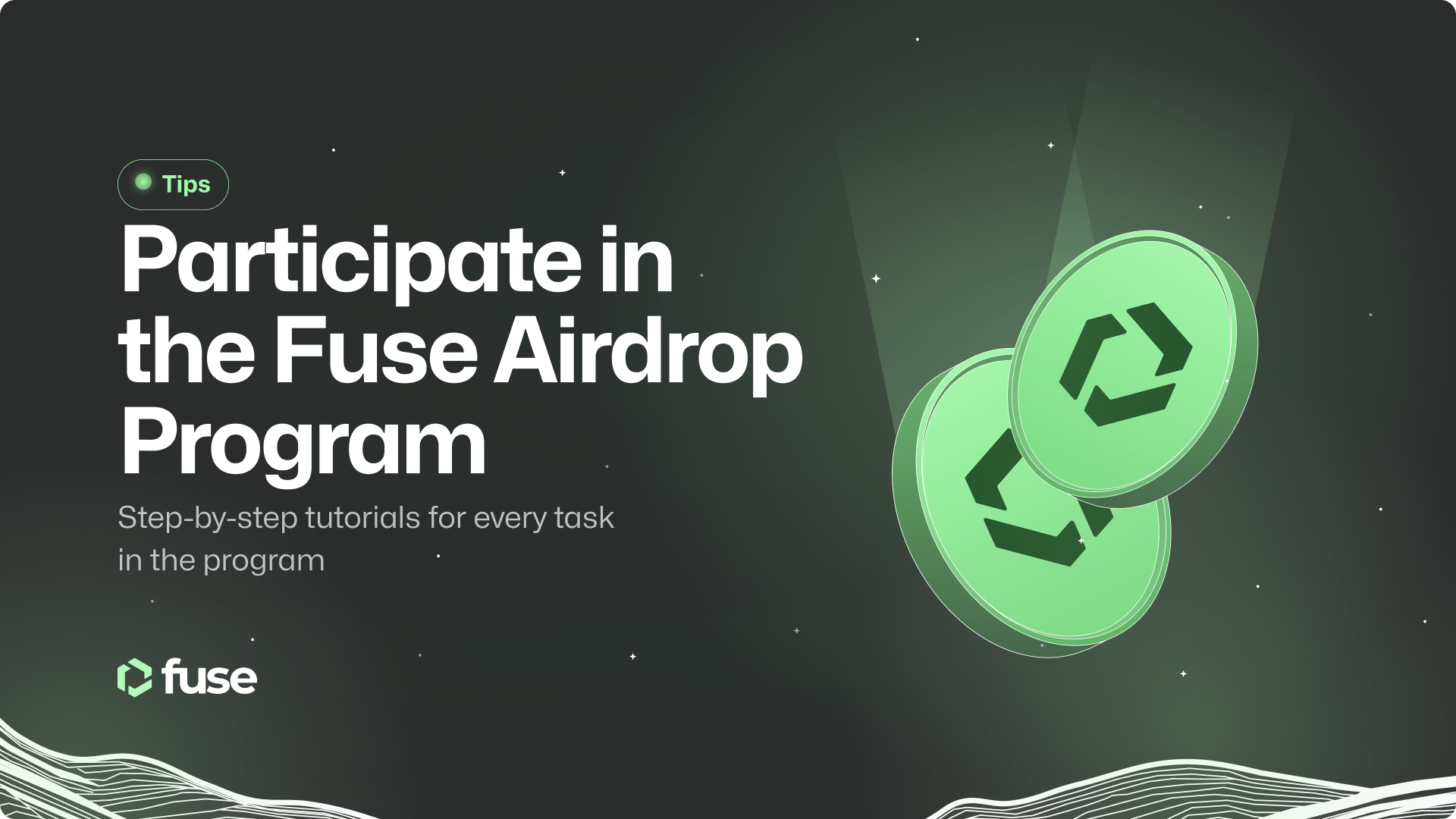The role of Power Validators on Fuse is critical in achieving the desired level of decentralization that makes sense for businesses. They are responsible for powering the payment infrastructure of the Fuse platform while also actively validating transactions.
Fuse was launched in 2019 to create a vertically integrated decentralized payment platform. Since then, Fuse has worked closely with prominent real-world-focused payments-based businesses.
These partners have helped us understand the value of decentralization for small and medium businesses (SMBs) and, specifically, the factors determining which protocol elements need to be decentralized and which should remain centralized.
Building on this experience, Fuse Network recently introduced the Fuse 2.0 Whitepaper. The Whitepaper explains Fuse’s decision to focus on digital payment solutions for the “long-tail” of small and medium businesses globally will grow in importance over the coming years.
To help the network evolve into a valid alternative to legacy payments infrastructure that leverages the benefits of decentralization for businesses where it makes sense. Fuse is gradually introducing proposed changes to the Network.
A crucial function in this change is the introduction of Power Validators (PVs) – the focus of this blog post. Additional modifications will be discussed in subsequent posts, on the Forum, and in Fuse Improvement Requests and Requests for Comments (FIPs and FRCs).
???? Sign up to have your say!
The difference between an FRC and FIP
Fuse Request for Comments (FRCs) can be any formal request posted, commented on, and voted on by anyone directly on the forum.
Fuse Improvement Proposals (FIPs) are formal proposals for Fuse Network updates that typically address technical changes and enhancements to the network’s protocols, consensus, infrastructure, or features, aiming to improve its overall performance, security, or usability.
All FIPs should provide motivation and technical specifications for the feature. FIPs are already part of the governance process of Fuse Network and have a formal weighted voting process that is limited to Fuse Network validators and occasionally FUSE token holders.
How do FRCs relate to FIPs?
If an FRC proposes technical changes and acquires positive community feedback and voting outcome, it progresses into a FIP where further consensus voting is performed.
See post: Introducing “Fuse Request for Comments (FRC)
The Business Case for Changes to Fuse Network: Suitability for the Payments Industry
To be suitable for widespread use in the financial services space, specifically in the payments industry. The Fuse Network must find a way to power and validate transactions securely and perform other actions inherent to day-to-day business while maintaining the decentralization of the chain and remaining easy to use. Read the Whitepaper for more discussion on the challenges of SMBs.
In other words, the infrastructure on top of the Fuse Network blockchain becomes more robust and decentralized. The Fuse blockchain must also change and offload most transactions to the execution layer.
What Changes Are Required to Fuse Network?
Three main components are required to achieve Fuse’s business goal:
- Introducing on-chain incentivized providers for essential middleware services at a certain quality level: Power Validators.
- Adding a zero-knowledge proof-based execution layer to enable private transactions and boost scalability.
- The move to a new consensus mechanism for the Fuse Network blockchain.
Introducing the Main Actors: Operators and Power Validators (PVs)
Until today, the development of Fuse as a payment-focused blockchain platform has primarily relied on the infrastructure (middleware stack) created by Fuse Labs. While that was sufficient to carry us quite far, priming Fuse for mass business and consumer adoption requires the introduction of new roles and entities within the Fuse ecosystem.
- Operators are real-world business applications, games, dApps, and anything that could run on the Fuse stack. They develop and maintain applications that involve payments, are responsible for the seamless onboarding of users to the applications on Fuse, support their users, and follow the corresponding local regulations where they operate.
- Power Validators run and maintain the payment infrastructure that Operators use to facilitate payments. Every entity on the network is represented with a Smart Wallet Contract.
What are PVs?
PVs are the first and essential component in the change to the Fuse Network blockchain. Their role is critical in achieving the desired level of decentralization that makes sense for businesses.
Introducing PVs is part of our strategy to further decentralize the business processes by running an additional trustless middleware layer on top of existing validator roles as part of the Fuse Network. Power validators are a big part of the payment flow and will be incentivized by charging a small percentage of the payment for the services provided.
The Role of PVs in the Payment Flow
Blockchain applications and wallets depend on various middleware services external to the on-chain logic. In the Fuse Stack, those services include transaction relays, account management, wallet APIs, verification, and more.
While Validators are essential for transaction approval, we found that the payment flow we want to provide is much more complex (see below).
The Revised Payment Flow
When a user wants to pay a merchant, the following steps will usually occur:
- The user opens the application developed by an operator and initiates the payment flow through it or uses its self-developed application.
- Behind the scenes, the operator’s application signs the transaction with the user’s private key and relays the signed transaction to the Power Validators network using Fuse-SDK. Of course, the app only accesses the PK on the user’s phone, so the approach is still non-custodial.
- Power Validators receive these transactions, validate them, bundle them, and relay them to the blockchain network.
- The transactions are confirmed by the validators and added to blocks.
- The merchants receive the funds in their wallets.
This payment flow requires an elaborated infrastructure of smart contracts and backend services. It will have additional requirements:
- Smart Contract Wallet and Account Abstraction – The network must deploy a smart contract wallet for every user. All users will require a complex transaction flow, and account abstraction helps to automate the process. PVs allow scaling.
- High throughput and fault tolerance – PVs will enable better scalability for the network. There are some advantages to having a centralized solution. Still, for generating a healthy network for business adoption, we can’t imagine how much essential infrastructure could have critical points of failure. Hence, the new PVs’ utility comes to mitigate this. We plan to achieve high throughput via Rollups. At the same time, the PVs will run sequencer nodes that commit the transactions in batches to L1—more on this in the Privacy/Scalability section.
- Privacy – some transactions must be private to generate meaningful adoption. The network needs to be able to process private transactions using the same infrastructure.
- Auxiliary services – Inc, wallet APIs, indexing and notification services, payment link generators, etc.
What functions and services will PVs perform?
PVs will perform several functions and services on the Fuse Network, introduced in multiple phases.
Phase 1: Relaying Service
Simply put: Relaying means bundling several gasless user operations into one transaction. Such user operations may include transaction abstractions, recurring payments, and other complex operations.
The Relay service is the inaugural service available for Power Validators to operate, and it has been instrumental in the growth of businesses on the Fuse network. This service facilitated gasless transactions for over 180,000 unique users and has been the backbone of this growth.
Permitting PVs to operate the Relay service will significantly enhance its robustness and decentralization, ultimately promoting a thriving Fuse ecosystem. In addition, PVs performing the Relay service will receive rewards through operators’ fees.
Phase 2: Identity, Indexing, Oracles, and Bridges
In Phase 2, we aim to decentralize most of the functionality of the Fuse Stack that does not require centralized middleware. In Addition, to relay services, PVs’ service will also include the following:
- User Identity – Upon user verification, the user will receive a DID as a Soul Bound Token (SBT), utilized to identify them on-chain. Metadata and verifiable credentials can be associated with their DID.
- Indexing – Indexing the Fuse Network and providing a user-friendly API for querying assets and wallets.
- Oracles – Running oracle nodes to provide price and other data feeds necessary for payment applications.
- Bridges – Implementation and operation of bridges between the Fuse network and other blockchain networks. The inclusion of bridges as part of the Power Validators service will further decentralize the Fuse network and promote its integration with different blockchain ecosystems.
Evaluating & Rewarding PV Services
The objective is to create a fault-tolerant system enabling high-quality service and a failover architecture. An algorithm to rate and verify the service quality per service needs to be defined. This algorithm can be used for PVs’ reputation.
We need to consider that evaluating one service is more complex than the other. For example, evaluating the Quality of Service (QoS) for the relayer service is more accessible based on on-chain data. On the other hand, the QoS of an API service has multiple parameters, such as response time failure rate.
PVs’ Service NFT: Due to the difficulty of evaluating each service, we propose rewarding each PV with an NFT representing their reputation and services. For example, a registered PV will receive a unique PV NFT. For each service the PV provides, they will be rewarded with a Service NFT (relaying NFT).
We launched a Fuse Request for Comments (FRC) to address this issue and welcome everyone to participate!
Incentives: Why Should You Become a PV?
The Relay service is the inaugural service available for PVs to operate, and it has been instrumental in the growth of businesses on the Fuse network.
- Relay Services – Operators’ Transaction Fees
PVs performing the Relay service (Phase I) will receive rewards through operators’ fees. - Beyond Operators’ fees
Because PVs form a crucial part of the payment flow of the Fuse Network, the reward for payments should not be exclusively tied to gas fees but also to transaction volume. We are exploring a split payment mechanism for specific transactions that would enable sharing a proportion of the transaction volume with PVs’ Relay services.
Join the conversation
The Fuse Request for Comments (FRC) is an essential tool to introduce – and receive community feedback on various proposals affecting the Network’s governance, tokenomics, and funding.
Each proposal is open for a vote by community members. Each vote is limited in time – time limitations may change. Members are welcome to vote and add additional feedback and questions. The Fuse Network will implement an approved proposal, sometimes followed by a related FIP or a revised proposal.



